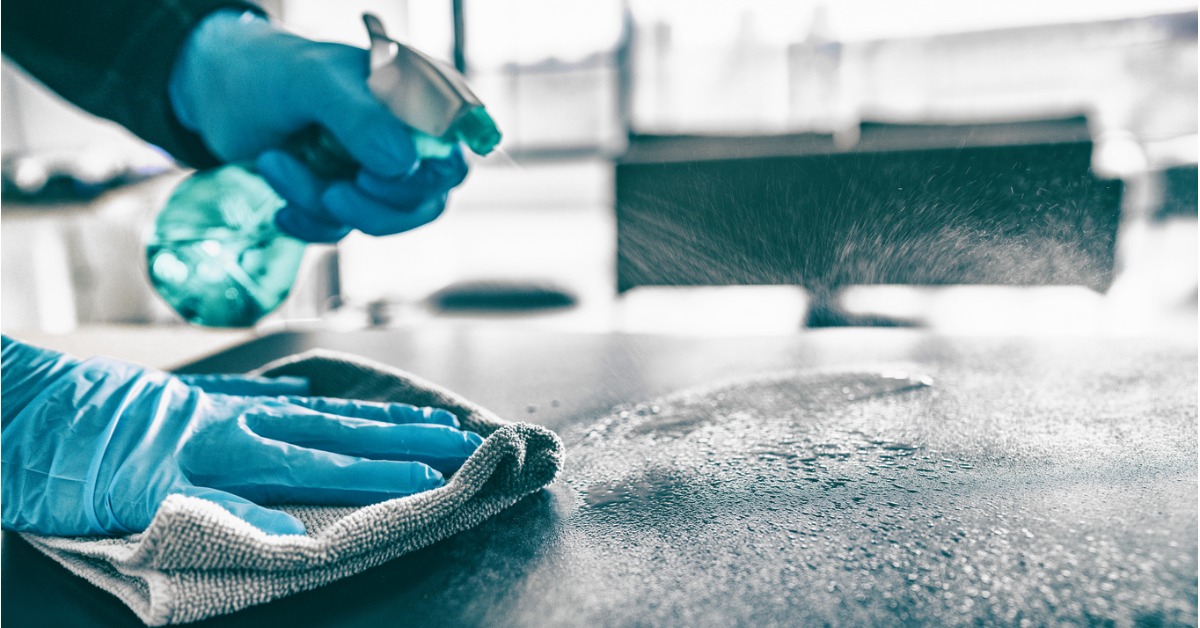
Some people incorrectly use the terms antiseptic and disinfectant interchangeably. Both are effective at killing bacteria, viruses and fungi. However, there’s one important difference.
What is an Antiseptic?
Antiseptics are used to kill microorganisms living on human skin. A lower concentrate of biocide is used in an antiseptic compared to a disinfectant because it’s being used on human tissue. If the concentration of biocide is too high, skin irritation can occur. Types of antiseptics include mouthwash, creams and hand sanitiser. Over the counter antiseptics are used to reduce the risk of infection in cuts, burns and wounds.
What is a Disinfectant?
Disinfectants are designed for use on non-living objects rather than human skin, so the concentration of biocide may be much higher. A disinfectant may be used on door handles, benchtops and handrails to kill microorganisms that survive on inanimate surfaces. An antiseptic may not be strong enough to kill all the bacteria and sanitise hard surfaces. Disinfectants use bleach, alcohol and formaldehyde to kill microorganisms. These active ingredients can be toxic to humans if ingested or applied to the skin. Gloves should be worn when using a disinfectant and care taken not to splash the product on the skin or eyes.
Not all disinfectants are the same. A range of household disinfectants are available in the supermarket for cleaning and sanitising surfaces in the home. But stronger disinfectants are needed in other settings where microorganisms with higher resistance to disinfectants may live.
Hospital-Grade Disinfectants
Some of the strongest disinfectants are referred to as hospital-grade. Healthcare settings are high risk locations for bacteria and viruses that can cause serious healthcare associated infections (HAIs).
The high concentration of very ill and elderly people who are often immune compromised make healthcare settings high risk locations for superbugs that are resistant to standard antibiotics.
Examples of superbugs are:
- Methicillin resistant Staphylococcus aureus – known as ‘golden staph’ or MRSA
- Vancomycin resistant Enterococcus – also referred to as VRE
- Carbapenemase-producing Enterobacteriaceae – also referred to as CPE.
These superbugs require the highest grade of disinfectant to be used to clean hard surfaces. Healthcare staff also need to use hand sanitisers or soap and water before treating each patient as staff can transfer an infection from one patient to the next on their hands.
Chlor-Clean is a hospital grade disinfectant that’s used in many healthcare settings around Australia. It’s an effective two in one cleaner and disinfectant saving time and money. With Chlor Clean, there’s no need to complete a three-stage process of cleaning the surface with a detergent then washing it off with water before using a chlorine disinfectant.
TGA Regulation
In Australia, a disinfectant or antiseptic used in some settings requires approval from the Therapeutic Goods Administration (TGA). Consumer cleaners and sanitisers aren’t regulated by the TGA. Products such as skin antiseptics including alcohol swabs and cleaning products that are intended for use on medical devices must be included in the Australian Register of Therapeutic Goods. Hospital grade or household/commercial grade disinfectant liquids, sprays, wipes, sponges and aerosols that make claims to kill microorganisms must meet regulatory requirements and be included on the Australian Register of Therapeutic Goods.
Using Disinfectant and Antiseptics
It’s important that everyone who uses a disinfectant reads the label, so they know how to use it correctly. The label advises the consumer of the type of surfaces it may be used on, advice on pre-cleaning the surface, if any dilution is required, how to apply the product and how long the product needs to sit on a surface to kill the microorganisms.
Read the label of antiseptic products before applying to the skin to ensure it’s suitable. Don’t use an antiseptic for longer than a week or long-term. Antiseptics aren’t suitable for large wounds or burns, an area of the skin which has a foreign object, eye infection or an animal bite or scratch. Seek medical treatment instead.
More Information
If you’d like to know about how Chlor-Clean can work in your setting as a hospital grade disinfectant, call Helix Solutions on 1300 29 32 32 or contact us online.